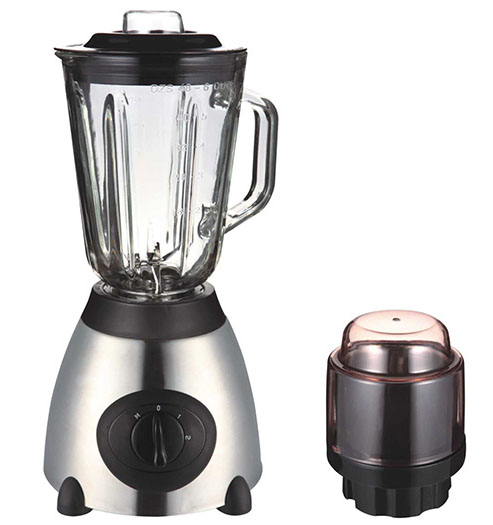The beneficiation method of molybdenum ore is mainly flotation, and the recovered molybdenum mineral is molybdenite. Sometimes in order to improve the quality of molybdenum concentrate, remove impurities, and then carry out chemical beneficiation of molybdenum concentrate. The molybdenite crystal is a hexagonal layered or plate-like structure formed by the S-Mo-S structure along the interlayer of Fanshijian and the polar covalent bond S-Mo in the layer. The bond between the layers is weak, and the covalent bond bonding within the layer is very strong. Therefore molybdenite easily disintegrate the layer structure between in the form of sheet or plate output, which is the natural floatability Hui copper ore good reason. Practice has proved that under suitable grinding fineness, the molybdenite crystal dissociation occurs between the S-Mo-S layers, and the hydrophilic S-Mo surface accounts for a small proportion. However, when over-grinding, the proportion of S-Mo surface increases, and the floatability decreases. Although a certain amount of polar collector such as xanthate is added at this time, it is beneficial to the recovery of molybdenum ore, but the new slime produced by over-grinding Affect the flotation effect. Therefore, the selection of molybdenite should avoid and prevent over-grinding. In the production, it is necessary to adopt segmental grinding and multi-stage sorting process to gradually achieve monomer dissociation and ensure high recovery of molybdenum concentrate. The crushing of molybdenum ore generally adopts a three-stage and one-closed process, and the final product has a particle size of 12 to 15 mm. Grinding is usually carried out using a ball mill or a rod mill-ball milling process. Flotation uses the preferred flotation method. Rough selection of molybdenum coarse concentrates, coarse sweeping of tailings to recover associated minerals or disposal. The molybdenum coarse concentrate is re-milled in two or three stages, and the final molybdenum concentrate is obtained in four or five times. The flotation agent of molybdenum ore uses a non-polar oil as a collector while adding a foaming agent. Surfactant Syntex is used as an oil emulsifier in the United States and Canada. The nature of the ore, as modifier with lime, sodium silicate gangue as inhibitors, sometimes add cyanide or sulfide minerals inhibit other heavy metals. In order to ensure the quality of molybdenum concentrate, heavy metal minerals such as copper, lead and iron contained in molybdenum concentrate, calcium oxide and carbonaceous minerals need to be further separated: Typically using sodium sulfide or sodium hydrosulfide, cyanide or copper and iron ferricyanide system; inhibition by weight of lead chromate or Knox (Nokes). If an inhibitor is used, the impurity content does not reach the quality standard, and it needs to be supplemented by chemical beneficiation: secondary copper sulfide is leached with cyanide; chalcopyrite is leached with ferric chloride solution; galena with hydrochloric acid and trichloro The leaching of the iron solution can reach the standard content. The gangue containing calcium oxide is easily muddy, so it is not necessary to over-grind the ore containing such gangue. Production is often added sodium silicate, sodium hexametaphosphate or an organic phosphate gel as gangue inhibitor or dispersant; Activated carbon can also be added CMC (carboxymethylcellulose) inhibition carbonate gangue. Finally, it can be leached by hydrochloric acid or hydrochloric acid plus ferric chloride solution. For the separation of carbonaceous minerals, it is first necessary to find out that the carbonaceous material is graphite , asphalt or coal . The floatability of these carbonaceous minerals is similar to that of molybdenum ore, but the density is small, and it can generally be removed by re-election; using hexapoly-sodium metaphosphate and CMC to suppress molybdenum float; or adding ferric chloride or water glass It is also effective to inhibit carbonaceous material with sodium hexametaphosphate; it is also one of the methods to remove organic carbon by roasting. It should be noted that the separation of all these carbonaceous minerals is currently unsatisfactory and is still a problem that has not yet been fully resolved. The SiO 2 (silica) content in the gangue is too high, often affecting the grade of molybdenum concentrate. It has been determined that the SiO 2 content decreases with the increase of the grade of molybdenum concentrate, and the two have a tendency to consume each other. As long as the molybdenum mineral reaches the monomer dissociation fineness, the SiO 2 content can generally fall below the standard. Adding activated carbon to the oil on the molybdenum surface, and adding CMC to inhibit the silicate gangue, the SiO 2 content can also be reduced below the standard.
Glass Jar Food Blenders
Glass Jar Food Blenders are stronger, which can crush ice. Glass jar food blenders' motors are more powerful, usaully use 7025 or 7030 motor. Their power can reach to 350/450W. Glass jar food blenders always with 6 pcs ice crushing blades and Coffee Grinder.
Discription of Glass Jar Food Blenders
Size: 1.25L, 1.5L
Controls Type: Rotary switch, push button
Packing: 4pcs/ctn(standard box)
Glass Jar Food Blenders,Glass Jar Blenders,Blender With Glass Jar,Glass Blender Flying Electronic Co., Ltd , https://www.flyingelectronic.com